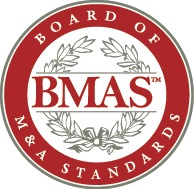
Avoid pitfalls by masking information requests.
By William Blandford, Managing Director at Blandford Associates and Member of the Board of M&A Standards. A former Nokia executive, Blandford is a featured guest at our upcoming workshop The Art of M&A for Divestments and Carve-Outs.
In estimating and planning for a divestiture, it is necessary to gather key data about the business to be carved out, to understand the scope and complexity of the carve-out, develop a sound Transition Services Agreement (TSA), and provide an estimate of the cost of the carve-out. But it can be difficult to collect data for a possible divestiture while under a Non-Disclosure Agreement (NDA), and trying to minimize the number of people under an NDA.
Overcoming the Non-disclosure Challenges of IT Due Diligence
One of the key functional areas most impacted by a potential carve-out is IT.
When there is a formal IT M&A resource/ team that is involved in early due diligence about a possible carve out divestiture, it can be too transparent for the IT M&A person to directly ask IT colleagues about a specific business, location or business system; that could easily indicate which business is being divested and could possibly violate the NDA agreement.
The best technique for avoiding this pitfall is to mask the information requests by asking for more general data from the key contacts who would normally gather that data as part of their typical job functions. This might include individuals or teams who manage IT infrastructure, IT business applications, IT Security and IT Product Development Support. For example:
- IT Infrastructure: To collect data about a specific location, expand the location request to include other nearby offices. The IT Infrastructure team could make the request under the umbrella of local and regional site rationalization.
- IT Product Development: If you’re looking for details about data volume, ask the IT Product Development team to make the information request as part of an efficiency study of product data and potential changes based on the actual data in use.
Similarly, requests about other IT infrastructure, IT financial data, and business applications could be generalized across more businesses than the one being considered for divestiture, and processed through the key IT contacts involved with those areas.
This technique can be an effective way of gathering data for the assets being transferred, IT costs charged to a potential business, and the applications being used that all will be needed to form a TSA. When done prior to the deal, it helps provide current data early in the process for cost estimation and TSA formulation.
When It’s Impossible to Avoid an NDA
In most cases, it is possible to maintain non-disclosure and gather the data you need by identifying a few IT resources that would know or could gather the data about the business as a normal part of their job function and/or masking your data requests.
Under some circumstances, however, that approach may not work. For instance, you may be navigating a large or complex divestiture with only a single business location. In a scenario like this, it may be necessary to place the key IT contact under NDA. While it’s not necessarily an ideal solution, this arrangement can offer some key advantages:
- Better ability to mask information requests: Your key IT contacts will likely be better equipped to artfully generalize requests in ways that won’t raise concern among colleagues.
- Streamlined data collection: In some cases, working with a key contact under NDA will eliminate the need to mask data requests altogether, eliminating unnecessary work for the IT team and simplifying your data sets.
- Contextualized insights: When key members of the IT team are aware of a divestiture, they may think to provide information and insights that would not have seemed relevant in a different context.
Proper IT due diligence is crucial to the development of a sound divestment strategy, but working within the confines of NDA can present a challenge. By identifying key stakeholders and framing information inquiries within the scope of their normal job functions, you can minimize the number of people under an NDA.
To learn more about IT due dilgence, join us in March for The Art of M&A Due Diligence. Learn more.
William Blandford is the Managing Director of Blandford Associates, aimed at Practical IT M&A Due Diligence and Integration. He has participated in over 50 transactions with two major high-tech companies. He successfully integrated more than 30 acquisitions and led the divestiture of 20 businesses. William has extensive experience in acquisitions, divestitures, spin-offs, and internal reorganizations across the globe with a primary focus on IT. William is also a member of the Board of M&A Standards.
